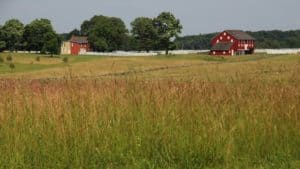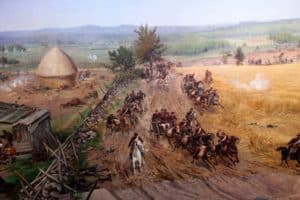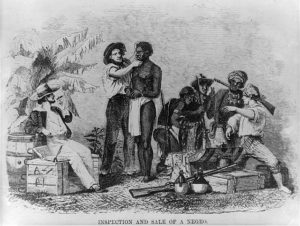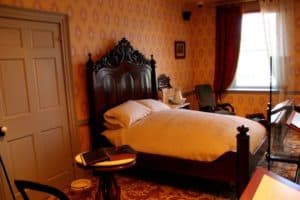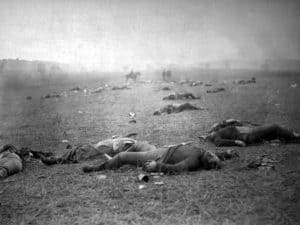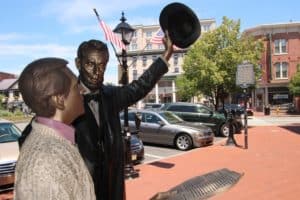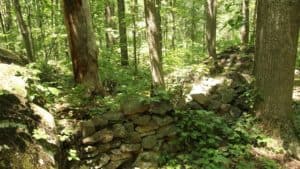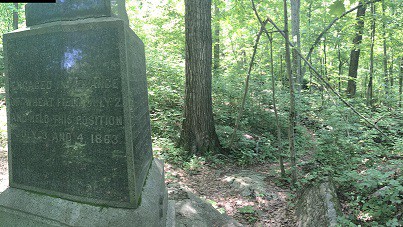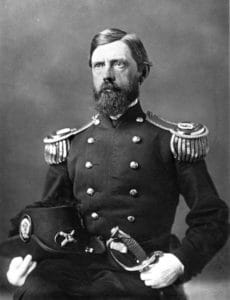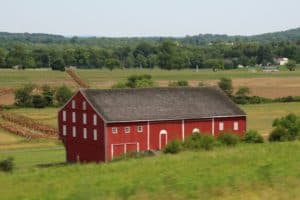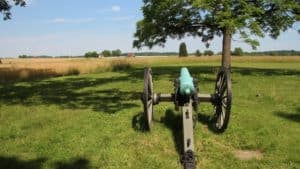Frightened and Alone
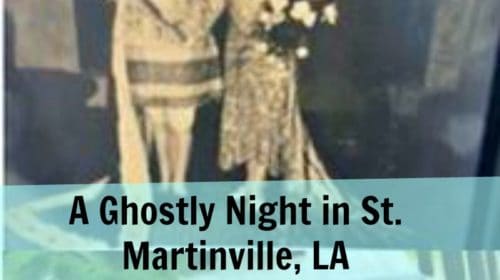 It was a little after 3 am in St. Martinville, Louisiana on the last night of my road ramble. I was alone and locked in the Old Castillo Hotel on the banks of the Bayou Teche. At 11 pm, I’d made a final walk around the downstairs salon and dining room to make sure the deadbolts on the heavy front entrance doors were secure. The salon was furnished with heavy antique furniture, upholstered in the red velvet so popular in the 1800’s. Hidden speakers played Cajun music so quietly that you had to strain to hear the fiddle and vocalist competing for the high notes. This music was not as raucous as chanka-chank or zydeco music. Tonight these melodies sounded like a invitation to a ghostly fais-do-do. Soft lighting from lamps in the parlor and on the stair landing would guide my steps if I needed to come downstairs in the middle of the night.
It was a little after 3 am in St. Martinville, Louisiana on the last night of my road ramble. I was alone and locked in the Old Castillo Hotel on the banks of the Bayou Teche. At 11 pm, I’d made a final walk around the downstairs salon and dining room to make sure the deadbolts on the heavy front entrance doors were secure. The salon was furnished with heavy antique furniture, upholstered in the red velvet so popular in the 1800’s. Hidden speakers played Cajun music so quietly that you had to strain to hear the fiddle and vocalist competing for the high notes. This music was not as raucous as chanka-chank or zydeco music. Tonight these melodies sounded like a invitation to a ghostly fais-do-do. Soft lighting from lamps in the parlor and on the stair landing would guide my steps if I needed to come downstairs in the middle of the night.
The Witching Hour
According to occult belief, witching hour occurs between three and four in the morning, the time during which there are no Catholic Church services and prayers, which are marked by the Canonical hours. I do not believe in that stuff, unless it is 3am and I am the only guest in a beautiful but spooky hotel that has been around since 1833. During that time, the old Castillo building and St. Martinville had endured a devastating yellow fever epidemic, hurricanes, and invasion by Federal forces during the Civil War. If that were not enough phantom-creating feedstock, it was also catty-corner from St. Martin de Tours, the oldest Catholic Church in southwestern Louisiana. In the old French tradition, the congregation buried their early priests beneath the sanctuary floor. What am I doing in this situation? I’ve never be able to watch scary movies, have never seen the Exorcist and used to watch “Lassie” from behind a living room recliner with a pillow held close to my face to block out frightening scenes.
How I Happened to Be in St. Martinville, Louisiana
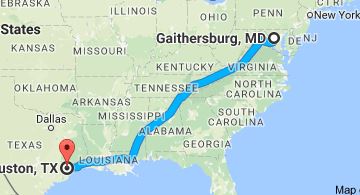 I had planned the 1800-mile northbound leg of my road trip for a couple months, starting in April. It took less than an hour to plan the southbound leg. I got out my 1993 Road Atlas and turned on the computer see “where” looked interesting. The first couple of hours would be an easy decision. By heading a bit farther north, I could swing through West Virginia and see Harper’s Ferry. After that, a quiet drive through back roads Virginia until I met Interstate 81.
I had planned the 1800-mile northbound leg of my road trip for a couple months, starting in April. It took less than an hour to plan the southbound leg. I got out my 1993 Road Atlas and turned on the computer see “where” looked interesting. The first couple of hours would be an easy decision. By heading a bit farther north, I could swing through West Virginia and see Harper’s Ferry. After that, a quiet drive through back roads Virginia until I met Interstate 81.
Stopping around Chattanooga, Tennessee looked like a good target and would have me on the road ten hours, not a bad chunk of the twenty-three hours it was going to take to get back to Houston. I referred back to my Atlas to see what less than a half-hour was from that city. After researching with Tripadvisor, I made a first night reservation at Wingate by Wyndham in Cleveland, Tennessee.
When I checked in, I remembered why I shy away from chain hotels. On the positive side, they always feel safe; the desk clerk is usually friendly and the room immaculate. On the down side, the ambiance can be like the ICU wing of a major city hospital.
Craving at least one more adventure on the way home and some good food, I once again consulted the Atlas and started planning. I remembered the little town of St. Martinville that Rindy and I have driven through on the back way to New Orleans. This is where the Cajun culture was born. I had spent an interesting couple of days in nearby Breaux Bridge about 30 years before. St. Martinville was too small for many chain hotels so I went again to Tripadvisor for lodging in the area.
Why I Chose the Old Castillo Hotel
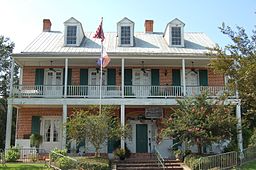 The Old Castillo Hotel had several things going for it. It was less than 30 minutes off I-10 and in the middle of town. If I left Cleveland by 6:30a, I could make the 3-5p check-in window. Then I could stable my car for the evening and walk to dinner and around town. It was amazing how quickly the Old Castillo answered my late night inquiry with a confirmed reservation in their Chambre de Petite Paris.
The Old Castillo Hotel had several things going for it. It was less than 30 minutes off I-10 and in the middle of town. If I left Cleveland by 6:30a, I could make the 3-5p check-in window. Then I could stable my car for the evening and walk to dinner and around town. It was amazing how quickly the Old Castillo answered my late night inquiry with a confirmed reservation in their Chambre de Petite Paris.
In 1765, St. Martinville was the site of the original landing of the Acadians fleeing the present day Canadian provinces of Nova Scotia, New Brunswick, Prince Edward Island. Atakapas and Chitimacha Native American tribes were already at home in these swamps and bayous. (To delve deeper into Acadian/Cajun history of this area, click here)
Old Castillo Hotel occupied the site of the Atakapa trading post on the Teche. Since Old Castillo Hotel was situated at the head of navigation for steamboats on the Teche, both hotel and town reigned as commercial and social centers until natural disasters and a snub by the railroad ended their boom. St. Martinville became a genteel elderly lady, hidden from view of motorists racing up I-10 to state business in Baton Rouge or good times in New Orleans. For over ninety years, the hotel was a girls’ high school run by the Sisters of Mercy. I was now trying to sleep in what had once been the rear of the typing room.
The Peggy Hulin bought the building in 1987 and changed it back into lodging. All was quiet on this weekday afternoon in the middle of the 2016 summer as I passed the Evangeline National Park on my way into town. The legendary Evangeline Oak, Southern Louisiana’s most beloved landmark, shaded the bayou side of the hotel.
Locked Out
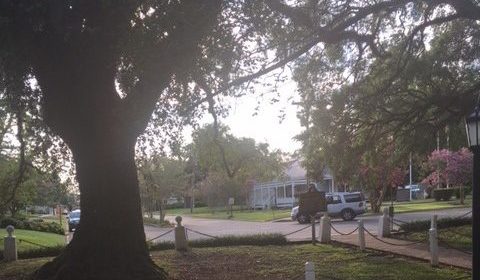 Since the Old Castillo Hotel’s doors were solidly locked when I knocked, I had decided to walk around a little bit and get circulation back in my accelerator leg before I called Peggy. I read the markers, written in both French and English, at the Evangeline Oak. The plaques told the story that had inspired Longfellow’s poem.
Since the Old Castillo Hotel’s doors were solidly locked when I knocked, I had decided to walk around a little bit and get circulation back in my accelerator leg before I called Peggy. I read the markers, written in both French and English, at the Evangeline Oak. The plaques told the story that had inspired Longfellow’s poem.
A wooden gazebo and some iron benches provided a shady place to contemplate the turbulent history that had created this peaceful spot. I stopped in at the Acadian and African American Museums, housed in a small brick building on the other side of the oak’s extended boughs. The woman at the desk told me the museum would close in fifteen minutes and to come back in the morning.
Touring the Old Castillo Hotel
I walked back to the hotel and called Peggy’s cell phone. She was “round back” somewhere in other buildings and in a few minutes, I heard the key and lock rattle. Peggy opened the door into a darkened hallway that bisected the first floor. The dining room and salon/parlor opened off the hall to the left and a reception office and closed doors were on the right. A wooden sign with partially obscured writing hung over a closed door and dated the hotel back to 1829.
 Peggy welcomed me in that musical voice you hear in Cajun country, not a foreign accent, but a lovely rearrangement of words and inflections. “Here is our brochure that tells you what you need to know and where everything is. If you would like some wine, just go through those double metal doors at the end of this hall. What time would you like breakfast? Would you like to know about some good places to eat dinner?” I was rusty at conversation and questions after two days of silence and hard driving. We settled on 9:00 for breakfast, agreed on dinner at St. John, the Restaurant just two blocks down the bayou, and viewed and approved my room.
Peggy welcomed me in that musical voice you hear in Cajun country, not a foreign accent, but a lovely rearrangement of words and inflections. “Here is our brochure that tells you what you need to know and where everything is. If you would like some wine, just go through those double metal doors at the end of this hall. What time would you like breakfast? Would you like to know about some good places to eat dinner?” I was rusty at conversation and questions after two days of silence and hard driving. We settled on 9:00 for breakfast, agreed on dinner at St. John, the Restaurant just two blocks down the bayou, and viewed and approved my room.
Where are the other guests?

“Okay then. This is the key to your room. And the other key on the ring is to the deadbolt on the front doors,” Peggy said. “Am I the only guest tonight?” I asked. “Yes,” Peggy said, pleased to give me this good news. “You got the place all to yourself. Enjoy and call me if you need anything!” and she was gone. I was still processing her last statement. Wait, what if I did not want this place all to myself?
I headed down the hall, pushed open the metal double doors and was in a large, industrial kitchen that looked like it hadn’t been used for quite a while. To the right was a stand-up cooler with glass doors like you would see in the back of a New York deli. There was one generous pour of Yellow Tail Chardonnay left in a 1.5 liter bottle. I took the bottle out and looked for a glass along the metal shelves. The screenplay for a scream queen movie was already writing itself in my head. Would I find a head in the cooler later tonight? Would I hear the squeak of the metal doors long after all was quiet?
Poking Around the Empty Hotel
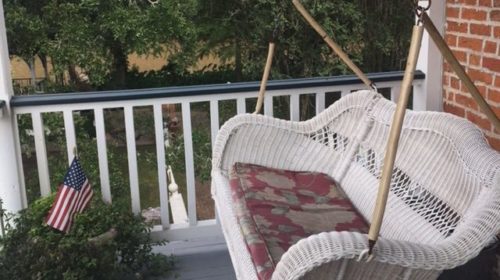
I felt better after I drank my wine. I checked out the dining room and salon. I peeked in the other public rooms on the first floor. Upstairs, I turned on a table lamp in the sitting room and walked through the French doors onto an outdoor gallery that ran the length of the hotel. A bench hung on chains from the porch ceiling on the bayou/oak side. Patio chairs and tables were scattered around the balcony. I found a spot and started organizing my notes for that week’s blog.

I practiced taking selfies with the oak and the bayou behind and below me. I would post these on Facebook and let everyone know I was headed home. A Forensic Files thought intruded. In the future, this selfie could be the clue that would solve my long-ago disappearance.
I made the mistake of texting a friend about my tentative plan to take a swamp tour tomorrow. The phone pinged with a response: “I saw a scary movie on late-night TV when I couldn’t sleep recently, about a swamp tour out of New Orleans. Do it….and pray you survive.” Great, another omen. I texted back that the swamp tour guide, Norbert, got great reviews on Tripadvisor. Return text: “What could go wrong with a guy named Norbert? Did you ever see ‘Cat People’ with Nastassja Kinski?” Okay, no more texting with friends.
Sharing Good Food and Sweet Times
I walked along the Bayou to St. John’s, The Restaurant. A man at the door welcomed me with, “Hello, Chérie!” The restaurant was noisy with laughter and conversations in both English and French. My young waitress, politely asked me why I was alone. Apparently, that was an anomaly in this tight-knit community. I told her about my road trip and she wanted to know where I had been and where I was headed. I ordered wine while I looked at the menu. When my waitress returned, I asked about “Eggplant on the Teche”, described as “eggplant medallions fried to a golden brown and topped with crab meat in a béchamel sauce.” “I don’t really like eggplant but everyone says it is good,” she replied honestly.
When the waitress gone, I pulled out a book from the hotel salon but soon was ease dropping on conversations around me. Seven women and one man, all in their late 80’s, sat at a table near me. Obviously long-time friends, the women were dressed up with full makeup, coordinated outfits, stylish shoes, purses, and statement jewelry. The woman seated at the head of the table had hair as red as Sharon Osborne’s’. A couple of the other women had various red hues from ginger to pink. Only the old man was giving in to gray and silver. Their waitress kept wine and drink glasses filled and they laughed and shared stories and gentle jibes. I ordered bread pudding and decaf coffee just to extend my time in their companionable presence.
Evening in St. Martinville
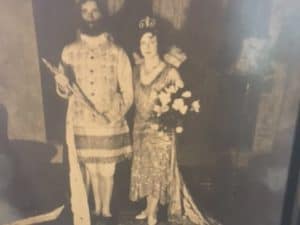
The sun was setting over the buildings along LA 347 when I walked back to the Old Castillo. I unlocked the double doors and checked all the downstairs rooms except for the kitchen. Not going there. Upstairs, I dropped off my purse and went into the sitting room in front of the French patio doors. There was a rocker and a small table with a Tiffany-style lamp.
There were also two female mannequins dressed in flapper-like party dresses. The outfits had been worn by Nelda Broussard Wright when she reigned as the 1925 Queen at the Rotary Mardi Gras. The form wearing the queen’s dress had no arms but the other mannequin was posed in a position suggesting the wearer was about to pick up her skirts and take off somewhere. Her dress, white in another old photograph, had been dyed black and shortened.
Out on the balcony that night, I watched a few cars repeatedly driven around the square by young men and women. Perhaps the octogenarians met their late spouses in the 1940’s while driving family cars around this same square. I stayed outside until the mosquitoes started to feed. Then I checked the locks one more time, took a melatonin tablet and climbed into bed. I slept fitfully, waking up every thirty minutes or so, when I would unconsciously strain to hear ghostly sounds. Just before dawn, I got up enough courage to turn off my light. I opened the east facing blinds and fell asleep until 8:00 am. I had survived my night alone in the Old Castillo.
Daylight and a big Cajun breakfast makes everything better
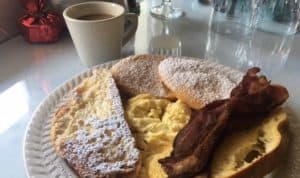
My reward was the homemade breakfast prepared by Peggy. Café au lait, fresh baked bread for the French toast served with Peggy’s watermelon rind preserves, flattened beignets with local sugar cane syrup, eggs, and thick cut bacon that probably came from chickens and hogs penned close to the hotel. I walked outside to sit and digest the plantation breakfast under the Evangeline Oak and was greeted in French by bearded priest wearing a brown cassock, hooded cowl and braided corded around his waist. It was similar to the robes of the Franciscan friars I’d met in California.
A Blending of Cultures
I strolled over to the The Acadian Museum and the African American Museum that was on the opposite side of the Oak from my hotel. Once again, I was the only guest. Both museums were small but told a compelling story about the two groups and how their history and culture intersected to create this unique region.
The Bible said God destroyed the Tower of Babel because he feared that if men all looked,talked, and believed the same thing, there was nothing that man could not accomplish. I think the ancient translator got it wrong; God really feared this sameness would limit what man could accomplish. Wasn’t the blended and enduring Louisiana Cajun culture evidence of that? A return to sameness frightened me more than a night alone in the Old Castillo Hotel.
.

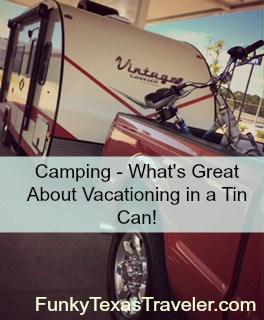
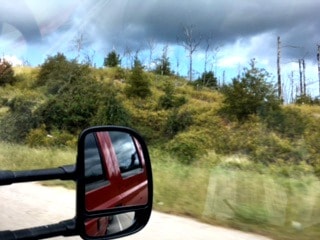
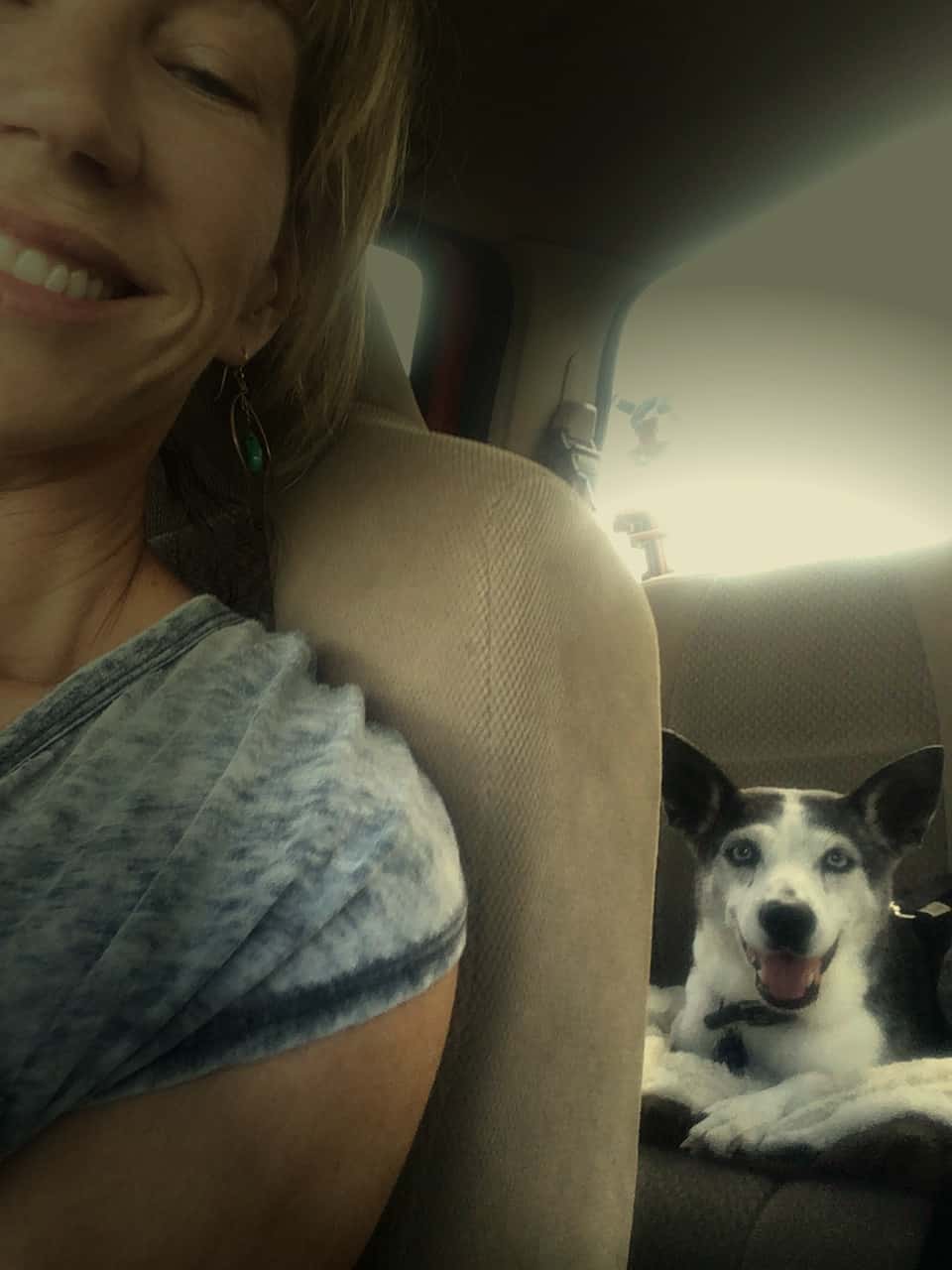
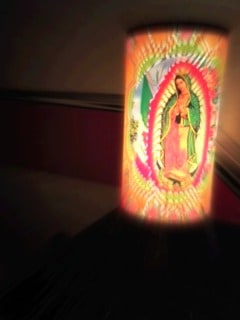
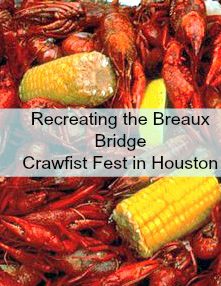
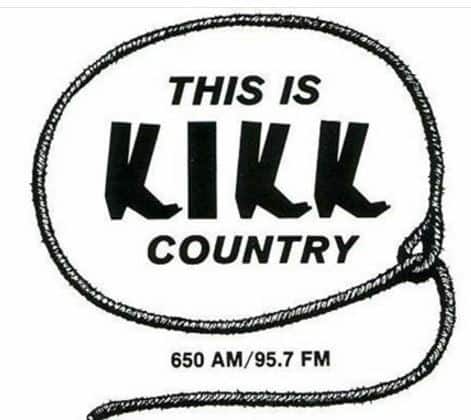
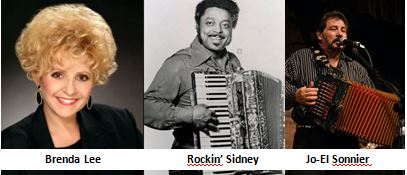
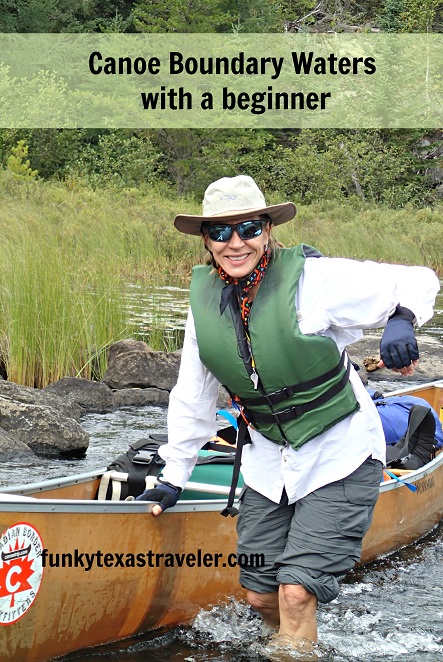

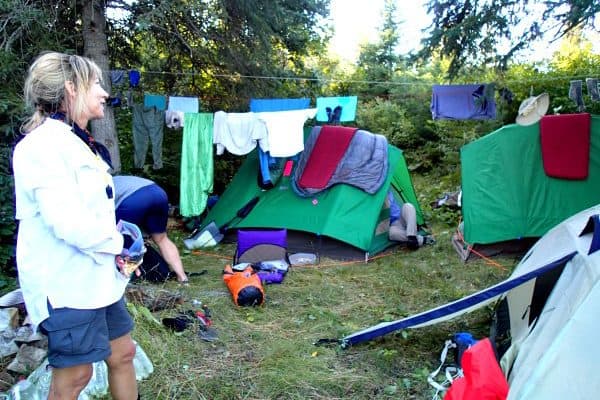
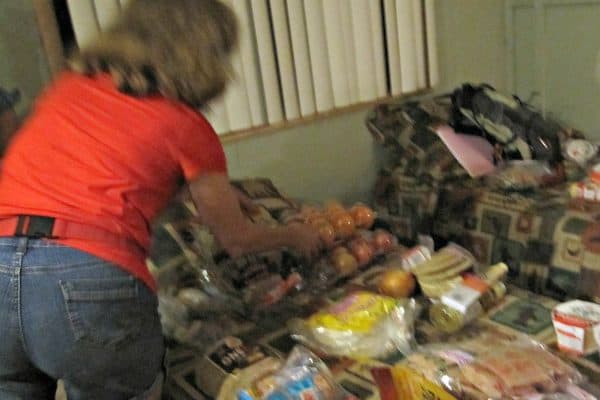

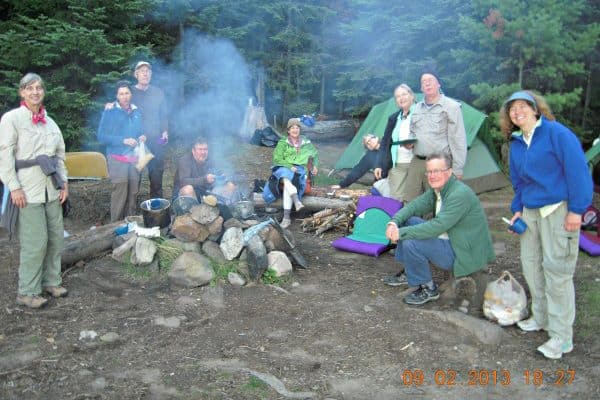

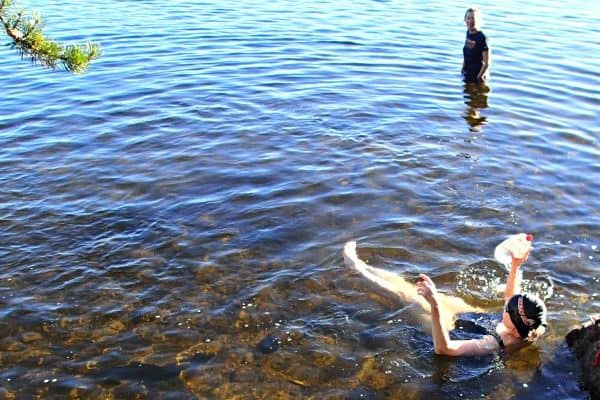
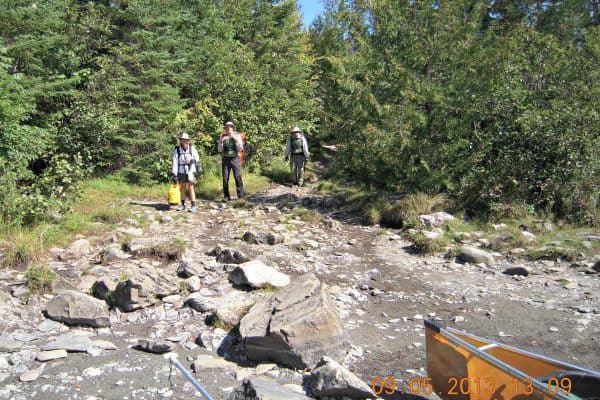
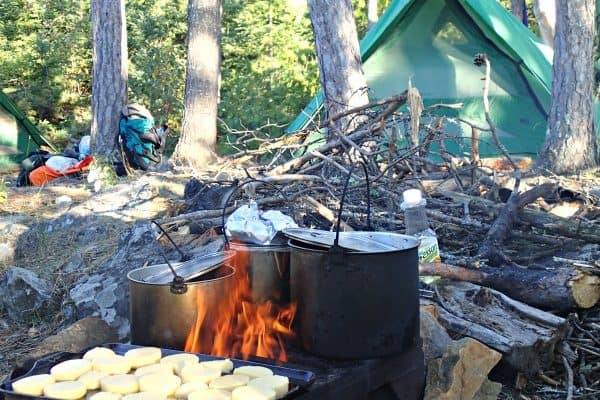
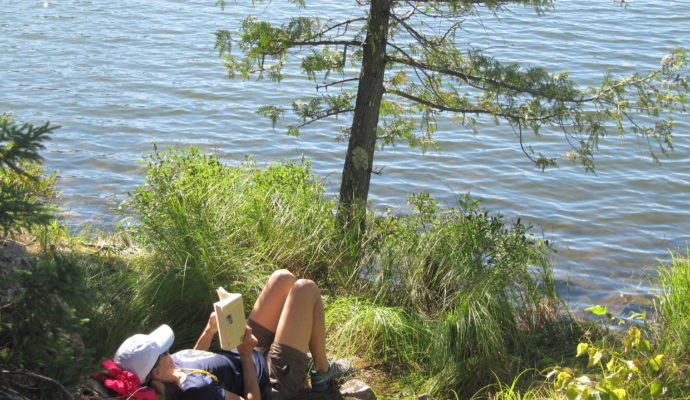
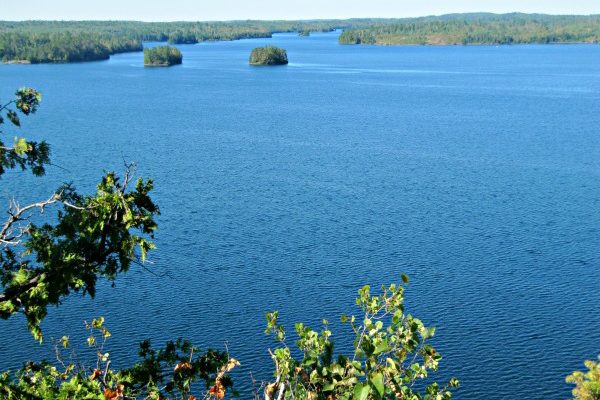
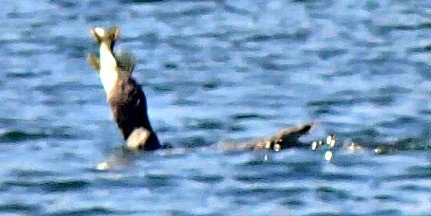

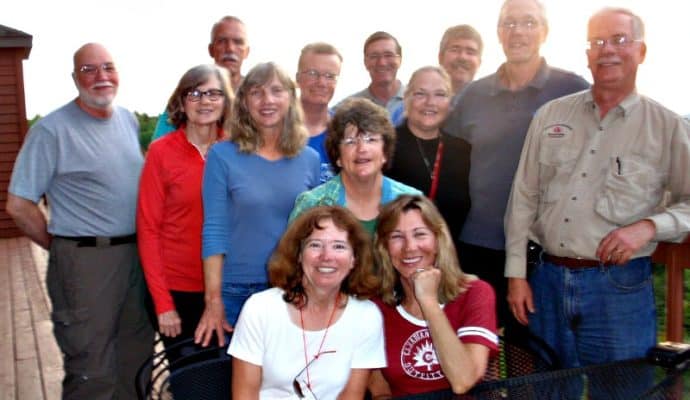
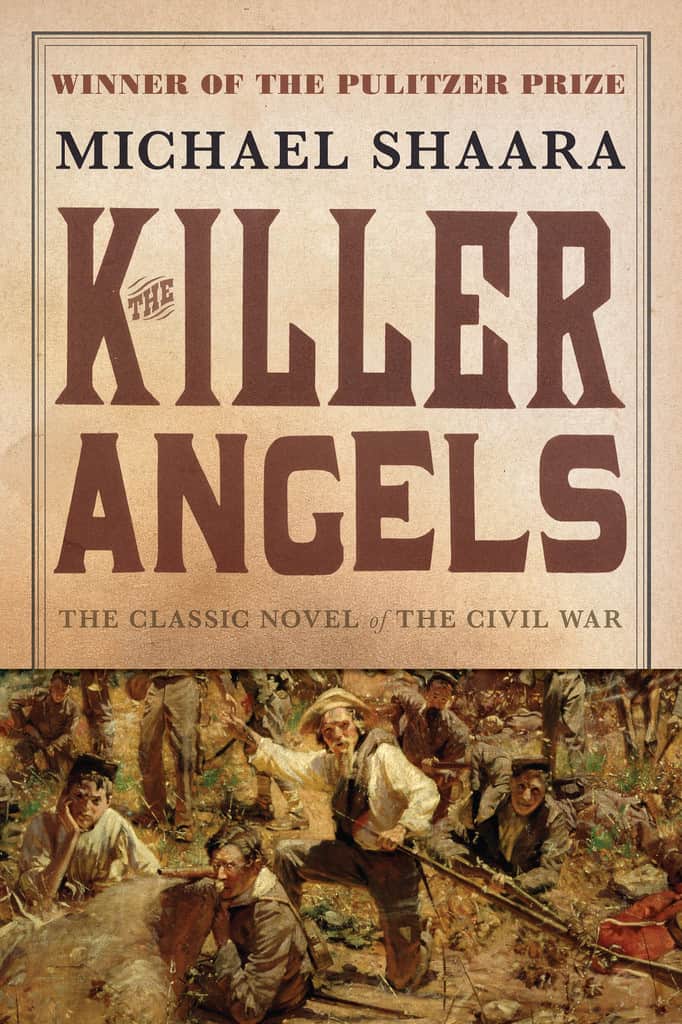 Is any war or battle glorious or is this myth propagated so that young men and women are willing to fight and die? I grew up on Marine Corp bases during the Vietnam conflict, the first war fought in full public view via our RCA and Philco consoles. When CBS anchor Walter Cronkite, who was called the most trusted man in America, traveled to Vietnam in 1968 and announced it was time for America to pull out, President Johnson reportedly told an aide, “If I’ve lost Cronkite, I’ve lost middle America.” I certainly felt lost. Maybe a battle that happened 100 years earlier would illuminate things.
Is any war or battle glorious or is this myth propagated so that young men and women are willing to fight and die? I grew up on Marine Corp bases during the Vietnam conflict, the first war fought in full public view via our RCA and Philco consoles. When CBS anchor Walter Cronkite, who was called the most trusted man in America, traveled to Vietnam in 1968 and announced it was time for America to pull out, President Johnson reportedly told an aide, “If I’ve lost Cronkite, I’ve lost middle America.” I certainly felt lost. Maybe a battle that happened 100 years earlier would illuminate things.
